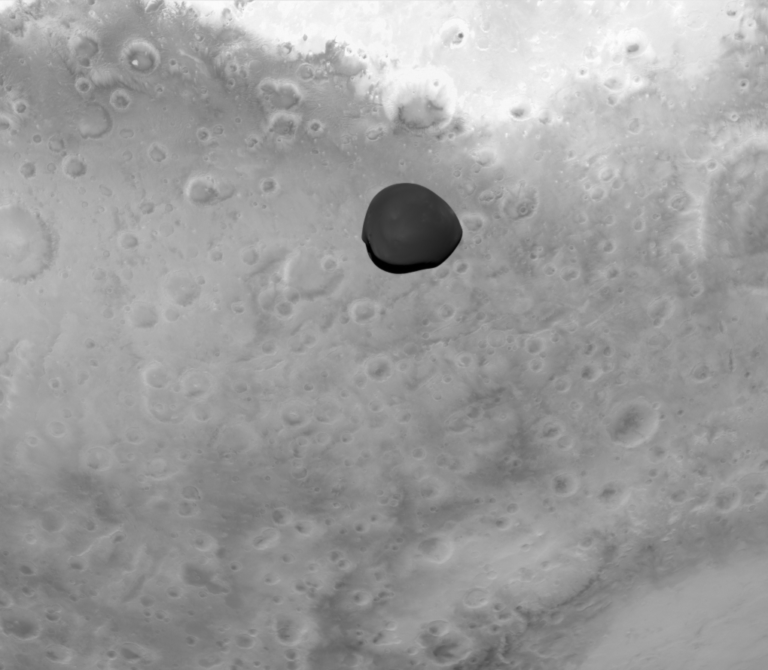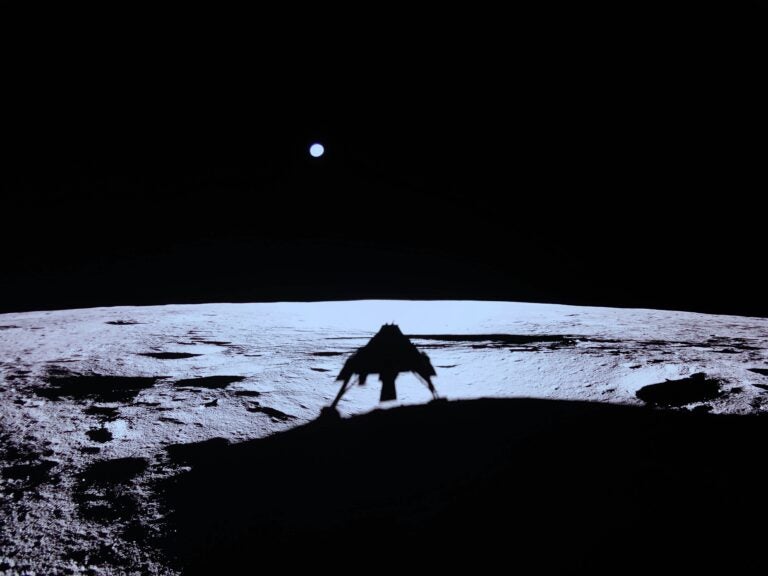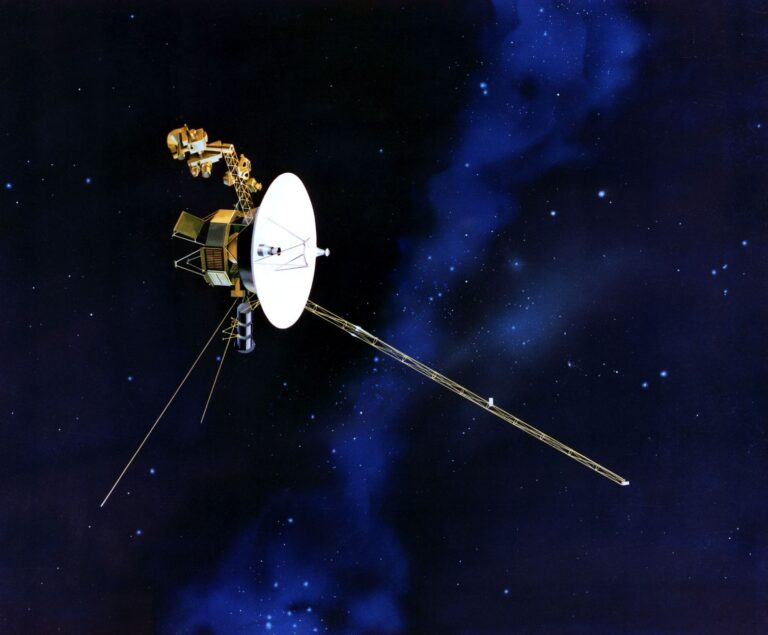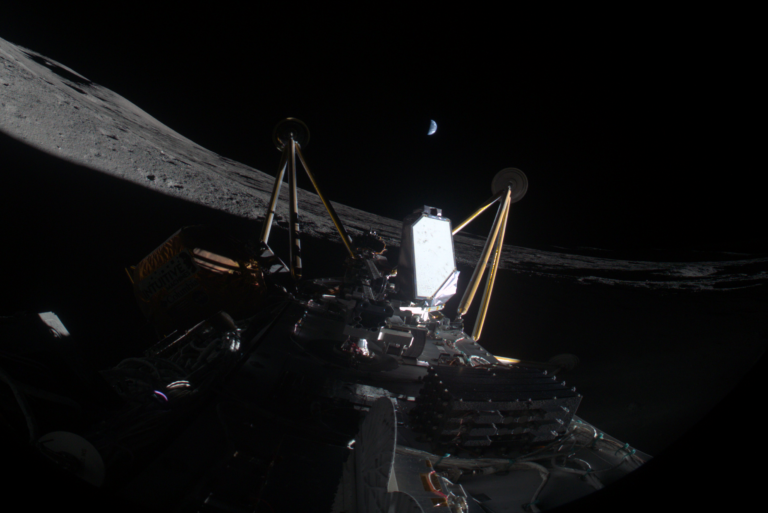
After a successful launch last week aboard a SpaceX Falcon 9 rocket, Intuitive Machines’ IM-2 mission landed on the Moon on March 6 shortly after 11:30 a.m. EST. The craft is transmitting back to its control center and able to collect some level of solar power.
However, its landing orientation and the status of other aspects of the mission remain unclear. Hours after the IM-2 lander touched down, Intuitive Machines officials said at a post-landing press conference that the craft did not appear to be upright. That makes it the second Moon landing in a row where the company’s lander has failed to land upright, after the IM-1 mission wound up partially tipped over last year. Mission controllers are still trying to determine the angle at which Athena is situated on the Moon as well as how far off target it strayed.
The lander, nicknamed Athena, was meant to touch down on the plateau atop the mountain Mons Mouton roughly 100 miles (160 kilometers) from the lunar south pole. As the craft neared the end of its 11-minute engine burn to slow its velocity and carry it to the surface, flight controllers lost contact with Athena, although presenters on the company’s livestream said that communication issues close to the surface were expected.
As time went on, however, mission controllers became visibly anxious and turned their focus to retrieving images from the craft. Ten minutes after the lander was supposed to be on the ground, flight controllers commanded Athena to turn off its engine. Intuitive Machine executive and mission flight director Tim Crain said that the lander was collecting solar power and that the team was working to determine the orientation of the lander. However, flight controllers also shut down some of the craft’s electronics to conserve power — an early sign that something was amiss.
Athena did land on Mons Mouton, but outside of its 50-meter target radius, Crain said at the press conference. As for the craft’s orientation, Intuitive Machine’s CEO Steve Altemus said that the team will need more data to get a clearer picture in the coming days. However, the payloads were able to turn on and will have opportunity to attempt to be deployed depending on their power supply.
This is not Intuitive Machine’s first brush with uncertainty after a lunar landing. On Feb. 22, 2024, the Houston-based company’s first lunar mission, IM-1, touched down harder than expected on the Moon near Malapert A crater, 186 miles (300 km) from the South Pole. A pre-launch wiring error on the lander, known as Odysseus, disabled its built-in laser rangefinders. As a result, the craft had to fly its approach without a precise altitude readout and skidded across the surface as it landed, breaking a leg and coming to rest at a 30° angle. The scientific payloads aboard were able to collect some data, but because of the lander’s angle, some were starved of solar power and shut off earlier than anticipated.
Despite not knowing the exact location or the attitude of the Athena lander, the teams at NASA and Intuitive Machines sought to highlight the positives of the mission and the progress the team had made since IM-1.
“Any day you can land something on the Moon is a good day,” said Crain.
Editor’s note: This story was updated to include information from Intuitive Machine’s press conference on the afternoon of March 6.









